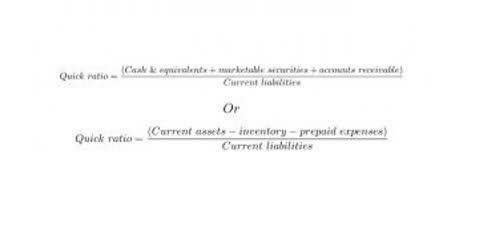Use a suspense account when you’re not sure where to record general ledger entries. Sometimes, at the time of closing, the account debit and credit in the trial balance do not match each other. To balance the TB and close the accounts, an accountant/bookkeeper may decide to close the TB and keep the balance in the suspense. The Airbnb Accounting and Bookkeeping most important point to understand is that transactions are recorded in the suspense account only temporarily and need to be relocated to their correct permanent accounts as soon as possible.
What type of account is a suspense account?
Auditors place special emphasis on suspense accounts during their audit procedures. Unresolved suspense accounts may raise red flags and draw auditors’ attention to potential errors, misstatements, irregularities, or inadequate internal controls within an organization’s accounting processes. Auditors will scrutinize the nature and balances of suspense accounts and request clarification or additional supporting documentation if necessary.
Example 9: System Errors
Timely identification and resolution of system issues can help prevent the creation of suspense accounts due to system errors. Suspense accounts have various effects on financial statements, auditing procedures, internal controls, and potential risks and consequences. Understanding these effects is crucial for organizations to appreciate the implications of suspense accounts fully. It is essential to periodically monitor suspense accounts to ensure that items held are promptly investigated, resolved, and cleared. Suspense accounts should be regularly reviewed during the accounting period or at the end of each reporting period to avoid items lingering in suspense for extended periods. Once the suspense items have been resolved, the suspense account suspense account should be eliminated or closed.
Subsequent Entry
- By utilizing a suspense account, these adjustment entries can be captured and subsequently allocated to their respective accounts, ensuring the accuracy of financial statements.
- Once the missing documentation is obtained, the entry can be properly allocated.
- Overall, the careful handling and management of suspense accounts are crucial for organizations striving to maintain accuracy, transparency, and compliance in their financial reporting processes.
- Essentially, a suspense account acts as a catch-all category for items that are pending further investigation or resolution.
Then, we close the account after making the necessary adjustments so that it’s no longer part of the trial balance. The continuation of unresolved suspense accounts can result in several potential risks and consequences for organizations. It is, therefore, imperative for organizations to proactively manage and resolve suspense accounts to mitigate these risks effectively.
Great! Hit “Submit” and an Advisor Will Send You the Guide Shortly.
The purpose of a suspense account is to temporarily store transactions that cannot be immediately classified into a specific account due to incomplete information or uncertainty. This accounting practice helps in maintaining the accuracy of financial statements while additional information is gathered. By following these steps, you can effectively use suspense accounts to manage uncertain or incomplete transactions. This practice not only helps in keeping your financial records organized but also aids in ensuring compliance and accuracy in financial reporting. Adjusting Entries are used to correct mistakes, whereas suspense accounts are useful for temporarily holding transactions until there is enough information to post them.
Data errors can occur during the transmission, processing, or recording of financial information. These errors can result in incorrect or incomplete journal entries that do not align with the intended account classification. QuickBooks A suspense account can be used to hold such entries until the error can be identified and rectified. A suspense account is a temporary account used in the general ledger to hold transactions that require further investigation to determine their proper classification. It is not specific to any one type of balance and can contain both debits and credits depending on the nature of the transactions it holds. A suspense account is created in the books of accounts when the bookkeeper/accountant of the business is uncertain about some business transactions.
It is possible to also have a liability suspense account, to contain accounts payable whose disposition is still being decided. For suspense account journal entries, open a suspense account in your general ledger. If it’s an asset in question, the suspense account is a current asset because it holds payments related to accounts receivable. A suspense account could also be a liability if it holds accounts payables that you don’t know how to classify. Missing or incorrect details can derail your bookkeeping efforts, but you need to record every transaction.
Example 1: Incorrect Entries
These accounts are designed to temporarily hold mortgage payments that are either incomplete or cannot be immediately applied to specific portions of the loan, such as principal, interest, taxes, or insurance. A suspense account is a component of a company’s financial accounts that is used to record confusing entries that require additional examination to determine their right classification. Depending on the context, “suspense account” might mean a number of different things. In simple terms, a suspense account is a bookkeeping account wherein transactions are recorded before being assigned to the right category.
- A suspense account can also hold information about discrepancies as you gather more data.
- Providing comprehensive training and ongoing education to accounting staff can significantly reduce the incidence of suspense accounts.
- It is, therefore, imperative for organizations to proactively manage and resolve suspense accounts to mitigate these risks effectively.
- Clear and consistent documentation is crucial in preventing suspense account occurrences.
- All such information is provided solely for convenience purposes only and all users thereof should be guided accordingly.
This closes out the suspense account and posts the transaction to the correct account. If you’re unsure about where to enter a transaction, open a suspense account and talk to your accountant. Use a suspense account when you buy a fixed asset on a payment plan but do not receive it until you fully pay it off. After you make the final payment and receive the item, close the suspense account and open a separate asset account. No, unlike mortgage escrow accounts, the money in a mortgage suspense account doesn’t earn any interest for the borrower.


 ست ها
ست ها





